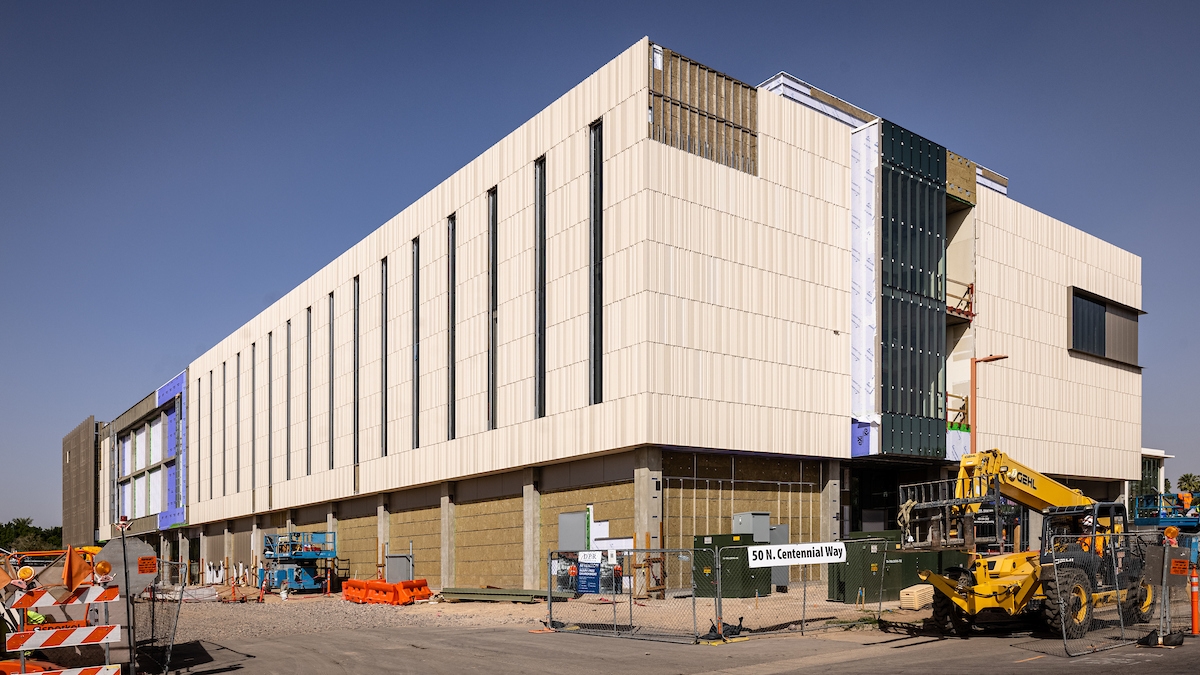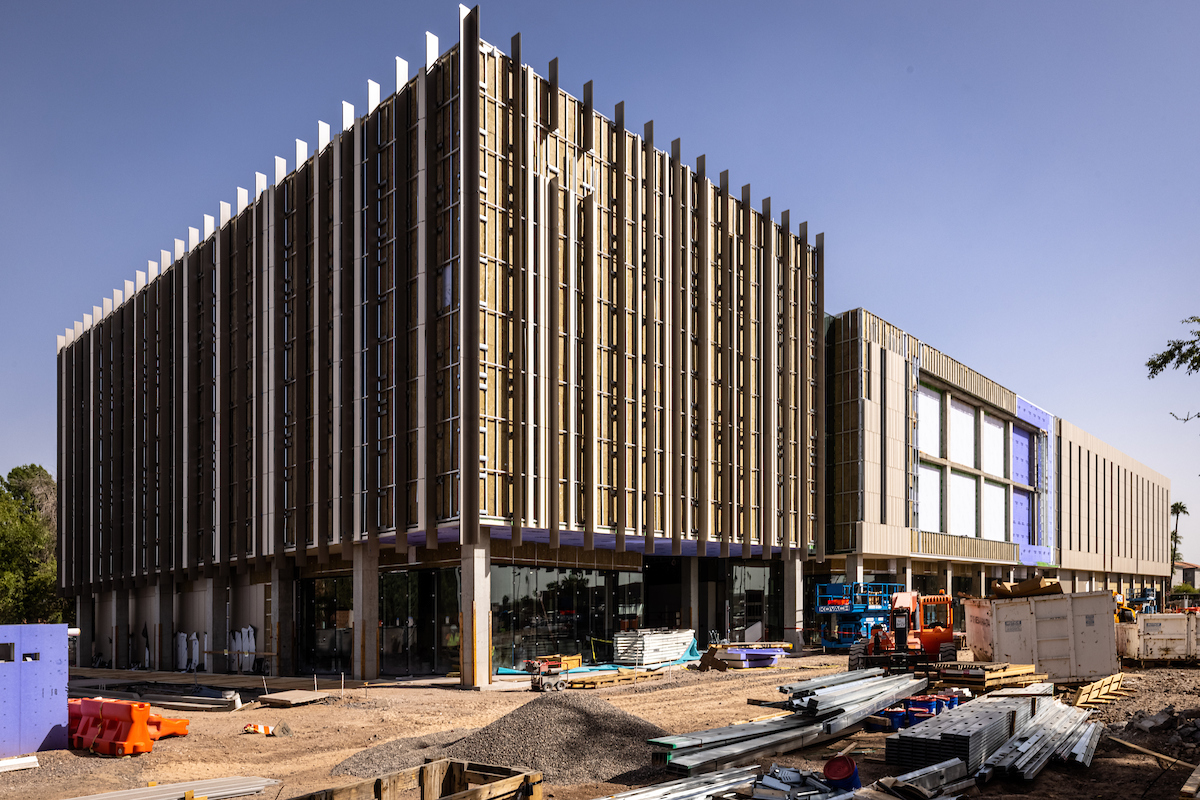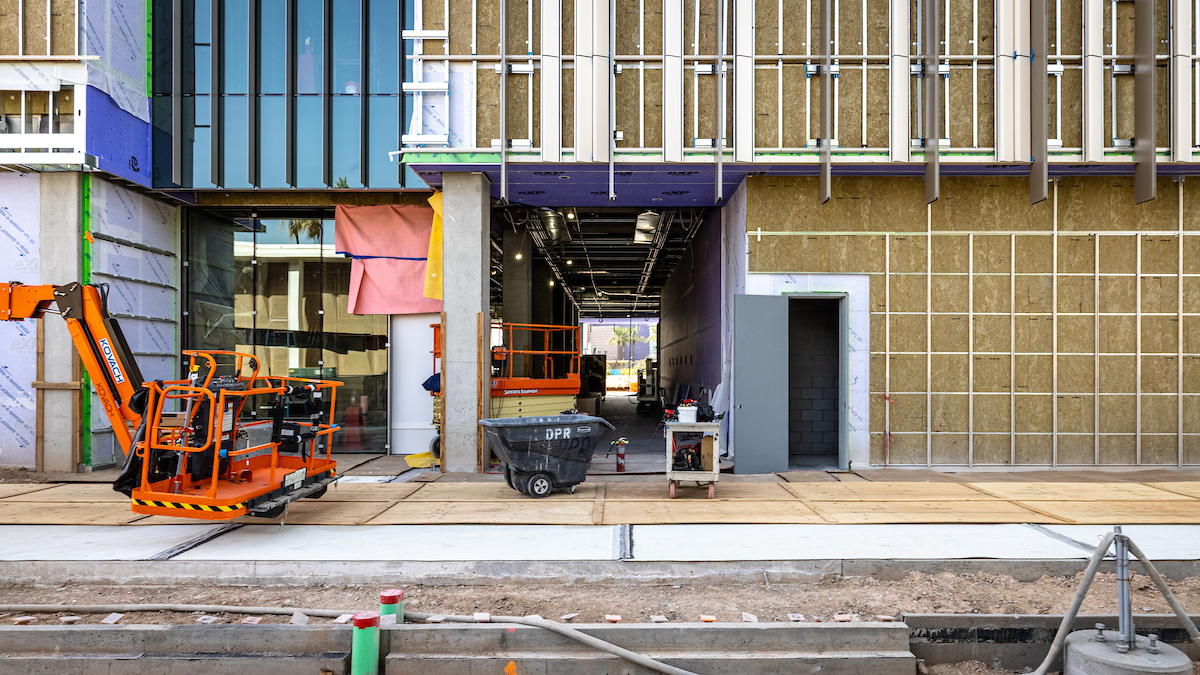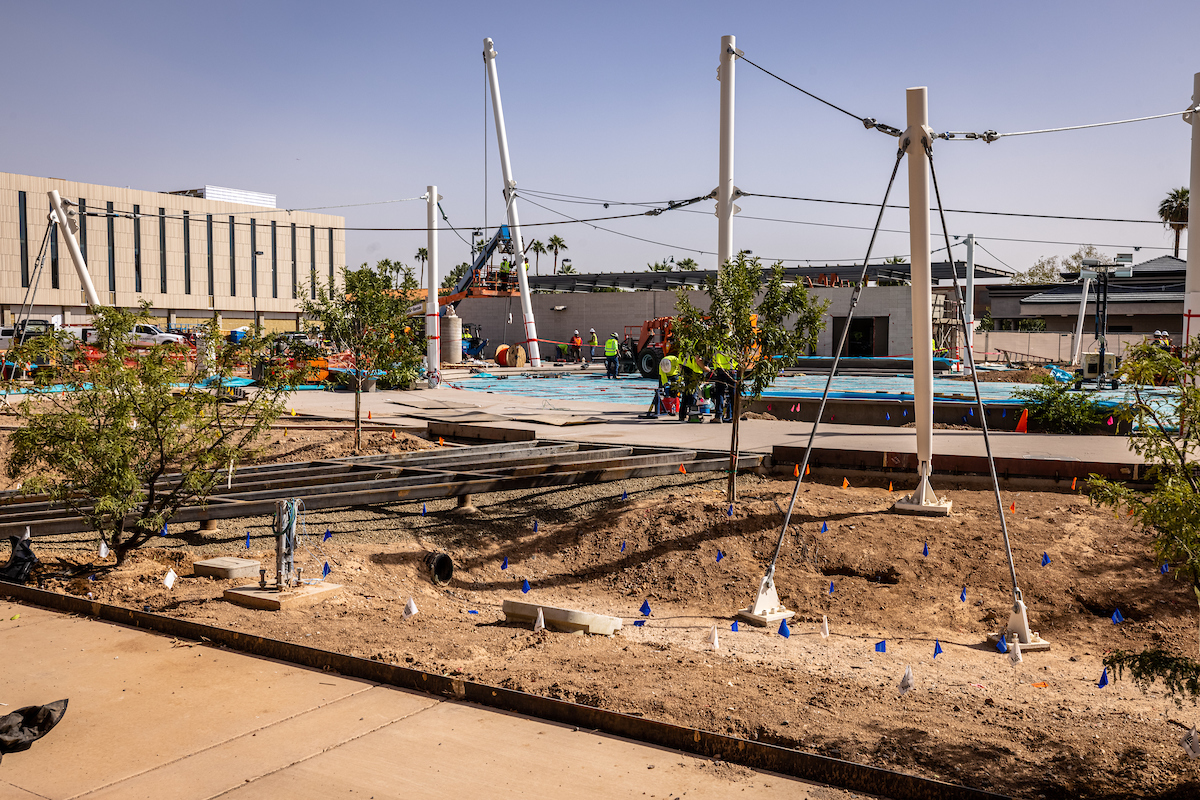With technology and innovation driving massive changes in consumer demand and behaviors, the new economy is simultaneously on the horizon and already here. Through its partnership with Arizona State University, the city of Mesa is going to be in the center of the action.
The university has made tremendous strides in the construction of ASU at Mesa City Center — the university’s new state-of-the-art facility that will be home to the newly named Sidney Poitier New American Film School and various programs within the Herberger Institute for Design and the Arts and the Ira A. Fulton Schools of Engineering in spring 2022.
ASU at Mesa City Center will be a focal point for taking advantage of opportunities presented by the new economy.
“The new economy will have new digital media tools,” said ASU President Michael Crow. “New digital visualization tools, new digital creativity tools, new digital creativity expressions, new digital creativity films, new digital creativity documentaries, etc. ASU at Mesa City Center lays down the underpinning that allows researchers, developers, creators, students, faculty, community members — everyone — to be involved in all things digital.”
Because of the complexity of the center’s academic programs and the need for ultimate sound isolation for the sound stages and studios, the building’s walls, ceilings and floors will be specially layered inside and out — a process that is taking place and includes the installation of a unique terra-cotta outer skin on the structure. Photo by Charlie Leight/ASU News
Within the next three years, ASU estimates that about 800 students, mostly film students, will attend ASU at Mesa City Center, enrolling in ASU’s Bachelor of Fine Arts in film and media production and three newly created graduate programs focused on extended reality and alternate reality technologies. They include the Master of Science in design with a concentration in immersive experience design, Master of Science in digital culture with a concentration in extended reality technologies and Master of Science in futures design.
“The three (graduate) programs together are meant to look at the way the world is now and (allow students) to visualize and simulate it in alternate virtual realities — and then to explore solutions to real-world problems through the use of those technologies,” said Jake Pinholster, the founding director of ASU at Mesa City Center.
The center will also play a pivotal role in uniting the university’s film students and programs within the city of Mesa, the Herberger Institute at ASU’s Tempe campus and students taking part in ASU’s Film Spark program at the ASU California Center in downtown Los Angeles in the Herald Examiner Building. Rick Naimark, the associate vice president for program development planning at ASU, explained that through the development of the building and its programs, the “ultimate goal is to create a seamlessly connected network between the three locations.”
Not only will ASU at Mesa City Center feature a 3,000-square-foot enhanced immersion studio that will allow students to create virtual and augmented realities, the three-story center will also include a state-of-the-art Dolby-certified screening room, which can accommodate 80 people and will be used for film students to debut their work to their peers and their community.
“It’s going to be one of the nicest theaters we have in Arizona,” said Naimark. “The combination of the sound stages and the immersion studio has put us in competition with some of the nation's biggest film schools.”
Because of the complexity of the center’s academic programs and the need for ultimate sound isolation for the sound stages and studios, the building’s walls, ceilings and floors will be specially layered inside and out — a process that is currently taking place and includes the installation of a unique terra-cotta outer skin on the structure.
The university’s new state-of-the-art facility will be home to the newly named Sidney Poitier New American Film School and various programs within the Herberger Institute for Design and the Arts and the Ira A. Fulton Schools of Engineering in spring 2022. Photo by Charlie Leight/ASU News
In order to support ASU’s cutting-edge film and immersive media programs, the university will bring in the most modern equipment, including production cameras and lighting, advanced sound systems, high-resolution computers and televisions and augmented and virtual reality systems. Additionally, the center will include an equipment shop, ideation studio, project and audio labs, editing bays and community meeting spaces, among other things.
Outside of the 26,000-square-foot academic space, progress is being made on two complementary projects funded by the city of Mesa. The 3-acre Plaza at Mesa City Center, which is set to be completed by Thanksgiving, and the Innovation Studios at Mesa City Center will be the site of numerous community events with the goal of helping the 35th-largest city in the country become an innovation district — where universities and communities work together to create prosperous outcomes.
ASU will operate and program the Innovation Studios on behalf of the city, with programs set to support individual and group creative, entrepreneurial and business developments through training programs, workshops, seminars and mentorship pairings.
In addition to the ASU facility, a large plaza will be constructed to the south for community events. Photo by Charlie Leight/ASU News
“The idea is for the Mesa Innovation Studios to become a community hub,” said Ji Mi Choi, vice president of Knowledge Enterprise at ASU. “The community hub is to be grounded to support small businesses and entrepreneurs in the community.”
In the end, all of the components within the ASU at Mesa City Center building will work together in what Crow calls "a full-fledged, digitally enhanced, digitally driven, digital-technology-enabled creativity center” to prepare students to succeed in careers of the future and in ways we cannot yet imagine.
Top photo: Currently under construction, the nearly 118,000-square-foot ASU at Mesa City Center building will house the Herberger Institute for Design and the Arts' academic programs related to digital and sensory technology, entrepreneurial support, experience design, film production and immersive media. Photo by Charlie Leight/ASU News
More Science and technology

ASU-led space telescope is ready to fly
The Star Planet Activity Research CubeSat, or SPARCS, a small space telescope that will monitor the flares and sunspot activity of low-mass stars, has now passed its pre-shipment review by NASA.…

ASU at the heart of the state's revitalized microelectronics industry
A stronger local economy, more reliable technology, and a future where our computers and devices do the impossible: that’s the transformation ASU is driving through its microelectronics research…

Breakthrough copper alloy achieves unprecedented high-temperature performance
A team of researchers from Arizona State University, the U.S. Army Research Laboratory, Lehigh University and Louisiana State University has developed a groundbreaking high-temperature copper alloy…





